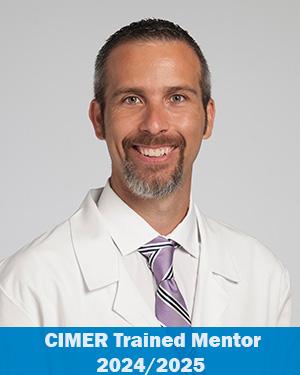Research News
05/20/2024
New study identifies promising treatment plans for chronic migraine
Combination treatment with multiple preventative therapies yield better results than the current standard of care.

Chronic migraine sufferers may experience more relief from combination therapies compared to individual medication regimens, according to researchers from the Genomic Medicine Institute and physicians from the Center for Neurological Restoration's Section of Headache and Facial Pain.
The CNS Drugs study, which comes from the laboratory of Ignacio Mata, PhD, analyzed records from over 700 Cleveland Clinic patients that met inclusion criteria to determine what treatment plans yielded the best results.
A migraine is worse than just a bad headache. During a migraine, cells in the brain become activated and release a molecule called calcitonin gene-related peptide (CGRP), causing debilitating pain that can make it impossible to function. Migraines are the second leading cause of disability worldwide, according to the Global Burden of Disease Study. People who have chronic migraines experience headaches at least 15 days per month for at least three months, with over half of those headaches meeting the criteria to be a migraine.
Many chronic migraine patients take preventative medications to help reduce the frequency and severity of their migraines. Even though these therapies are the most promising options available to patients right now, neurologist MaryAnn Mays, MD, says that many patients who take them do not get enough relief from their symptoms.
Dr. Mays is an expert in Headache Medicine and the Vice Chair of Education at Cleveland Clinic's Neurological Institute. Even with preventative therapy, many patients do not achieve the desired 50% reduction in migraine frequency. While the number of migraines experienced per month may decrease, patients still meet the criteria for a chronic migraine diagnosis. Two common treatments are OnabotulinumtoxinA (Botox), and newer treatments that use monoclonal antibodies that target the migraine-triggering CGRP molecule (anti-CGRP mAbs).
Dr. Mays and her colleagues noticed that patients who were only treated with Botox or anti-CGRP mAbs exhibited higher treatment failure rates compared to their patients who qualified for dual therapy with both medications.
The neurologists teamed up with Amira Salim, a PhD student in Dr. Mata's lab who studies neurological disorders, to objectively determine whether patients who had been treated with Botox or anti-CGRP mAbs alone could experience more relief and fewer monthly migraine days when treated with a combination of both drugs. Salim had previously created a large-scale dataset from the medical charts and appointment notes from 714 individuals who sought treatment for their chronic migraines from Cleveland Clinic between 2018 and 2021 for her thesis project.
They saw that patients who were treated with a dual-therapy approach (both Botox and anti-CGRP mAbs) experienced about half as many migraines per month as patients on monotherapy. Their findings suggest that combining therapies may be a better option for patients who don't achieve maximum benefit from a "one-medicine" approach.
Studying how individuals respond to different medications is critical to improving patient care, says Salim, who is also the study's first author. Logistical barriers, such as insurance policies limiting coverage to a single preventative treatment or delaying the start of certain treatments can hinder patients from getting the care they need.
"Scientific evidence supporting dual-therapy approaches can remove some of those barriers by helping to change current policies," she says. "We hope our findings can help patients receive access to a dual-therapy treatment plan that improves their overall health and quality of life more than the current standard of care."
Their work was supported by a Office of Research Development Co-Laboratories Program grant. The Co-Laboratories Program encourages new collaborations between different research teams that may not have worked together previously.
Featured Experts
News Category
Related News
Research areas
Want To Support Ground-Breaking Research at Cleveland Clinic?
Discover how you can help Cleveland Clinic save lives and continue to lead the transformation of healthcare.
Give to Cleveland Clinic